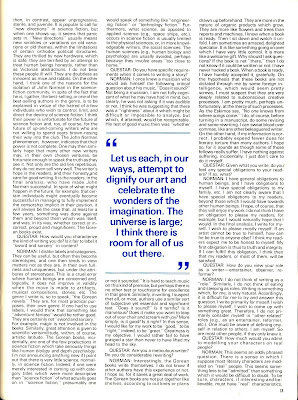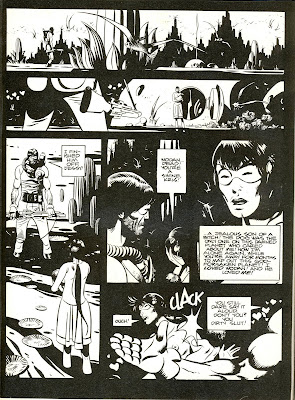3 / 5 Stars
By 1977, many fans had become tired of New Wave content and were eager to see a newer generation of hard SF novels come upon the scene. It thus was apt timing for Del Rey to issue ‘Inherit the Stars’ (216 pp., July, 1977), the first novel by British writer James P. Hogan.
Hogan, who passed away this past July, met with considerable success with ‘Inherit’ and went on to write a number of well-received books, including the sequels ‘The Gentle Giants of Ganymede’ (1978), ‘Giant’s Star’ (1981), ‘Entoverse’ (1991) and ‘Mission to Minerva’ (2005).
Del Rey took pains to present ‘Inherit’ as something new and progressive in SF. The cover features a realistic, eye-catching illustration by Darrell Sweet, in marked contrast to the abstract artwork that occupied many New Wave paperback covers. The advertising blurb from Isaac Asimov compares Hogan to Arthur Clarke, then the reigning king of hard SF.
In 2027, a UN expedition on the Moon comes across the space-suited corpse of a man lodged in a small cavern just under the lunar surface. Carbon dating indicates the corpse is 50,000 years old; his equipment is unlike anything ever manufactured on Earth, and the writing in his notebook is unknown to any linguist. ‘Charlie’ clearly came to the Moon from somewhere else. But where was ‘somewhere else’ ? And what implications does Charlie have for the origin of the human race ?
‘Inherit’ is unabashed hard SF. The main character is a physicist, his right-hand man an engineer. Any psychological angst generated by the narrative revolves solely around solving the grand scientific puzzle posed by the discovery of ‘Charlie’ in his crypt on the Moon. Labored dissections of personal relationships, thoughts, emotions, etc. are avoided. Conversations are to the point, and devoid of references to angst and despair, stylistic tropes much beloved by New Wave authors.
Del Rey took pains to present ‘Inherit’ as something new and progressive in SF. The cover features a realistic, eye-catching illustration by Darrell Sweet, in marked contrast to the abstract artwork that occupied many New Wave paperback covers. The advertising blurb from Isaac Asimov compares Hogan to Arthur Clarke, then the reigning king of hard SF.
In 2027, a UN expedition on the Moon comes across the space-suited corpse of a man lodged in a small cavern just under the lunar surface. Carbon dating indicates the corpse is 50,000 years old; his equipment is unlike anything ever manufactured on Earth, and the writing in his notebook is unknown to any linguist. ‘Charlie’ clearly came to the Moon from somewhere else. But where was ‘somewhere else’ ? And what implications does Charlie have for the origin of the human race ?
‘Inherit’ is unabashed hard SF. The main character is a physicist, his right-hand man an engineer. Any psychological angst generated by the narrative revolves solely around solving the grand scientific puzzle posed by the discovery of ‘Charlie’ in his crypt on the Moon. Labored dissections of personal relationships, thoughts, emotions, etc. are avoided. Conversations are to the point, and devoid of references to angst and despair, stylistic tropes much beloved by New Wave authors.
At times the book can become quite didactic, although Hogan usually breaks his lectures off before the reader’s eyes can glaze over. Almost every chapter introduces yet another ‘cosmic’ revelation, with the reasoning behind these revelations presented with care and deliberation.
‘Inherit’ does indeed borrow some of its themes from Clarke, particularly 2001: A Space Odyssey. But Hogan does a good job with his story, however derivative; he writes as well as, if not better, than Clarke (and for that matter Asimov).
‘Inherit’ does indeed borrow some of its themes from Clarke, particularly 2001: A Space Odyssey. But Hogan does a good job with his story, however derivative; he writes as well as, if not better, than Clarke (and for that matter Asimov).
Looking back nearly 34 years later, it’s easy to see how the fan base, tired of the more self-indulgent tenor of so much of mid-70s ‘speculative fiction’, was ready and willing to embrace SF that successfully updated the traditional mind-set of the genre.
















































































